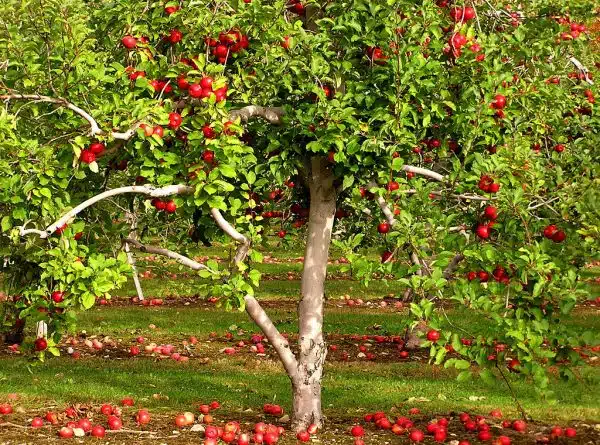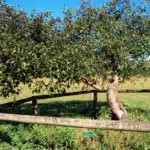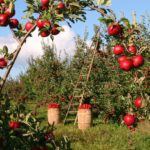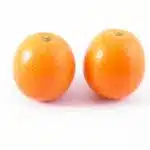The early harvest apple tree is a popular fruit tree among gardeners and orchardists for its ability to produce fruits earlier than most apple varieties. This variety of apple tree is known for its medium-sized apples that have a bright red color and crisp texture. The early harvest apple tree is relatively easy to grow and care for, making it an excellent choice for those who are new to fruit tree cultivation.
To successfully cultivate an early harvest apple tree, it is essential to understand the plant’s growth habit, environmental requirements, and potential pest problems. In this article, we will provide a comprehensive guide on how to grow and care for early harvest apple trees. We will discuss the ideal soil conditions, planting techniques, pruning methods, and fertilization schedules that will help ensure healthy growth and abundant fruit production. Additionally, we will provide tips on how to identify common pests and diseases that may affect your early harvest apple tree and recommend effective control measures. With this guide, you’ll have all the information you need to cultivate a thriving early harvest apple tree in your garden or orchard.
Understanding Early Harvest Apple Trees
Imagine a world where apple trees are like people. Just as every person has unique traits that make them who they are, each apple tree has its own growth patterns and fruit characteristics that distinguish it from others. One such tree is the Early Harvest Apple Tree. As a horticulturalist or arborist, understanding this type of tree is key to successfully growing and caring for it.
Early Harvest Apple Trees are known for their early ripening, which makes them a popular choice among orchard owners and home gardeners alike. They typically grow to be about 20 feet tall with a spread of around 15 feet. These trees have an upright growth pattern, making them suitable for small gardens or backyard settings. The fruit produced from these trees is medium-sized with a yellow-green color and a slightly tart taste.
When selecting an Early Harvest Apple Tree for planting, it’s important to consider the site carefully. These trees thrive in full sunlight with well-drained soil that is rich in organic matter. Avoid planting in low-lying areas where water accumulates or in areas prone to frost pockets during the spring months. Proper selection of the planting site is crucial to ensure the tree grows healthy and produces quality fruit year after year.
Selecting The Right Site For Planting
When selecting a site to plant an early harvest apple tree, there are two important factors to consider: soil composition and sunlight exposure. The ideal soil for apple trees is well-draining, loamy soil with a pH level between 6.0 and 7.0. Soil that is too compact or too loose can hinder the growth of the roots, which in turn affects the overall health of the tree.
Sunlight exposure is also crucial for healthy apple tree growth. These trees require at least six hours of direct sunlight per day to thrive, so it’s important to choose a site that offers ample natural light. Avoid planting your apple tree in areas that are shaded by buildings or trees, as this can stunt its growth and affect fruit production.
Overall, selecting the right site for planting your early harvest apple tree is crucial for its future success. Taking into account factors such as soil composition and sunlight exposure will help ensure that your tree grows up strong and healthy, ultimately leading to a bountiful harvest in the years to come.
Transitioning into the subsequent section about preparing the soil for planting: Now that you have selected an appropriate site for your early harvest apple tree, it’s time to prepare the soil so that it provides optimal growing conditions for your young tree.
Preparing The Soil For Planting
As we’ve discussed in the previous section, selecting the right site for planting your early harvest apple tree is crucial to its growth and development. Now that we’ve identified the perfect spot, it’s time to prepare the soil for planting. Soil preparation is a significant aspect of growing healthy apple trees and ensuring a bountiful harvest.
Before planting, it’s essential to assess the soil’s texture, fertility, pH level, and nutrient content. The ideal soil for apple trees should be well-draining but retain enough moisture to support root growth. It should also be rich in nutrients such as nitrogen, phosphorus, and potassium. To achieve this, we recommend adding organic matter such as compost or aged manure to enhance soil structure and promote microbial activity.
Once you have prepared your soil adequately, it’s time to consider nutrient management techniques that will help your early harvest apple tree thrive. Proper fertilization during the growing season is critical for tree health and fruit production. We recommend using a balanced fertilizer with equal amounts of nitrogen, phosphorus, and potassium applied at regular intervals throughout the growing season. With proper soil preparation and nutrient management practices in place, your early harvest apple tree is sure to flourish!
Now that we’ve covered all aspects of soil preparation and nutrient management let’s move on to planting techniques for early harvest apple trees.
Planting Techniques For Early Harvest Apple Trees
When planting an early harvest apple tree, it is important to choose a suitable location that provides adequate sunlight and well-draining soil. Apple trees require full sun exposure, which means at least 6 hours of direct sunlight each day. Additionally, the soil should be well-drained to prevent waterlogged roots and potential diseases. It is also essential to consider the spacing requirements for your chosen variety of apple tree. The average spacing between trees should be around 15-20 feet apart.
When planting your early harvest apple tree, dig a hole that is twice as wide and deep as the root ball. Ensure that the graft union (where the scion and rootstock meet) remains above ground level when planting. Gently spread out the roots in the hole and fill it with soil, making sure to tamp down firmly to eliminate air pockets. After planting, water thoroughly and mulch around the base of the tree to retain moisture and suppress weeds.
Finally, remember that apple trees are not self-pollinating, meaning they require another compatible cultivar nearby for cross-pollination. Be sure to select appropriate pollination partners based on bloom time and compatibility with your chosen variety of early harvest apple tree. This will ensure optimal fruit production and high-quality harvests for years to come.
- Choose a sunny location with well-draining soil.
- Space trees appropriately according to their variety.
- Plant pollination partners nearby based on bloom time and compatibility.
Moving forward, watering and fertilizing your apple tree are crucial components of proper care.
Watering And Fertilizing Your Apple Tree
After successfully planting your early harvest apple tree, it is important to ensure that it receives sufficient water and nutrients. In order to achieve this, drip irrigation is highly recommended as it provides a slow and steady supply of water directly to the roots of the tree. This method helps to prevent over-watering and also reduces the risk of fungal diseases caused by excess moisture on the leaves.
In terms of fertilizers, organic options are preferred as they provide a slow-release source of nutrients that are less likely to burn the roots or negatively impact soil health. Organic fertilizers such as compost, bone meal, and fish emulsion can be applied in small amounts throughout the growing season. It is important to note that over-fertilization can lead to excessive growth and poor fruit quality, so it is best to follow recommended guidelines for application.
By providing appropriate levels of water and nutrients through drip irrigation and organic fertilizers, you can help your early harvest apple tree reach its full potential. In the next section, we will discuss the importance of pruning in maintaining a healthy and productive apple tree.
Pruning Your Early Harvest Apple Tree
Pruning is a vital aspect of tree maintenance that aids in promoting healthy growth, fruit production, and overall plant vigor. Different pruning techniques can be employed depending on the age and stage of the apple tree. For young trees, pruning is essential to train them into a desirable shape and form. On the other hand, mature trees require pruning to remove dead or diseased branches and promote new growth.
The best time to prune your early harvest apple tree is during the dormant season, typically late winter or early spring before new growth begins. During this period, it is easier to see the tree’s structure without leaves and identify any damaged or diseased branches that need removal. Pruning during this time also reduces the risk of spreading diseases since most pests are inactive.
When pruning your early harvest apple tree, consider using sharp pruning shears or loppers for clean cuts. Start by removing any dead or damaged wood, followed by crossing branches that rub against each other. Next, cut back any water sprouts (vigorous upright shoots) growing from the base of the trunk as they can reduce fruiting potential by diverting energy away from fruit production. Lastly, thin out some interior branches to allow light penetration and good air circulation within the canopy.
As you prune your early harvest apple tree, remember that different techniques may apply depending on your specific situation. Always consult with a certified arborist for professional advice on how to maintain healthy trees in your area. In the next section, we will discuss how to protect your apple tree from pests and diseases without compromising its integrity.
Protecting Your Tree From Pests And Diseases
As the saying goes, prevention is better than cure. This holds true for protecting your early harvest apple tree from pests and diseases. Just like how we take care of our own health by eating right and exercising regularly, we must also take care of our trees to ensure their overall well-being.
One effective way to prevent pests and diseases is by practicing good hygiene. This means removing any fallen leaves or fruit on the ground as they can harbor pathogens or attract unwanted insects. Additionally, pruning your tree regularly will help improve air circulation and sunlight exposure, which in turn will promote healthy growth and reduce the risk of disease.
Another important aspect to consider is choosing the right type of treatment for your tree. Organic solutions such as neem oil or insecticidal soap can be effective in controlling pests without harming beneficial insects. On the other hand, chemical treatments may be necessary in severe cases but should be used with caution as they can harm both pests and beneficial insects alike.
To summarize, protecting your early harvest apple tree from pests and diseases requires regular maintenance and proper treatment methods. By practicing good hygiene and using appropriate solutions for pest control, you can ensure a healthy and fruitful harvest for years to come.
Transitioning into the next section on harvesting and storing early harvest apples, it is important to note that proper timing is key in ensuring optimal flavor and texture.
Harvesting And Storing Early Harvest Apples
Early harvest apples are generally ready for harvesting in late summer or early fall, depending on the variety. To ensure a good harvest, it is important to prune the apple tree regularly and to mulch the soil to protect against any frost. Once harvested, early harvest apples can be stored for a few weeks in a cool, dark place to allow for the ripening process. To extend the shelf life of early harvest apples, it is recommended to store them in a refrigerator or other cool area with regulated humidity levels.
Harvesting Early Harvest Apples
When it comes to harvesting early harvest apples, timing is key. These apples are typically ready for picking in mid to late summer, before other varieties of apples. To determine if they are ready for harvest, look for a change in color from green to yellow or red and gently lift the apple off the tree. If it comes off easily with a slight twist, it is ripe and ready to be picked.
Once you have harvested your early harvest apples, proper storage methods are essential for maintaining their flavor profile. Store them in a cool, dry place such as a basement or refrigerator at around 30-40 degrees Fahrenheit. It’s important to not store them with fruits that produce ethylene gas such as bananas or avocados, as this can cause premature ripening and spoilage of the apples.
In conclusion, harvesting and storing early harvest apples requires attention to detail and proper care. By picking them at the right time and storing them correctly, you can ensure that these delicious fruits will maintain their flavor profile for weeks to come.
Storing Early Harvest Apples
When it comes to harvesting early harvest apples, a crucial part of the process is storing them properly. Apples have a relatively long shelf life compared to other fruits, but they still require certain apple storage and preserving techniques to maintain their quality. To ensure that your early harvest apples remain fresh and flavorful for as long as possible, it’s important to know the best way to store them.
One key factor in apple storage is temperature. Early harvest apples should be stored in a cool, dry place with a temperature range of 30-40 degrees Fahrenheit. This can be achieved by storing them in a basement or refrigerator. However, it’s important to avoid storing them with fruits that produce ethylene gas like bananas or avocados since this can cause premature ripening and spoilage of the apples.
Another essential aspect of apple storage is humidity control. Apples should be kept in a place with moderate humidity levels between 90-95% to prevent dehydration without promoting mold growth. It’s also recommended to store apples in perforated plastic bags or containers instead of sealed ones as this allows for proper air circulation which helps prevent rotting.
Overall, proper apple storage and preserving techniques are crucial for maintaining the quality of early harvest apples after they’ve been harvested. By following these guidelines, you can enjoy delicious and healthy apples for weeks or even months after they’ve been picked!
Troubleshooting Common Issues
Pest prevention is a critical aspect of cultivating an early harvest apple tree. One common pest that affects the apple tree is aphids. These tiny insects feed on the sap of the leaves and weaken the tree, making it susceptible to other diseases. They can be controlled by using insecticides or by introducing natural predators such as ladybugs or lacewings. Another pest that can damage the fruit is codling moth larvae. These pests can be prevented from laying eggs on the apples by wrapping them in protective sleeves before they ripen.
Nutrient deficiencies are another issue that may arise when caring for an early harvest apple tree. To ensure healthy growth and development, it is essential to provide the tree with sufficient amounts of nitrogen, phosphorus, and potassium. Nitrogen deficiency will cause yellowing of leaves and stunted growth, while phosphorus deficiency leads to poor root development and dark green foliage. Potassium deficiency results in weak branches and small fruits. The best way to prevent nutrient deficiencies is to perform regular soil testing and fertilize accordingly.
In summary, preventing pests and addressing nutrient deficiencies are crucial steps towards successful cultivation of an early harvest apple tree. Regular monitoring of plant health through observation can help detect issues before they become severe problems. It is also advisable to prune regularly to maintain proper shape and encourage fruit production. In the subsequent section, we will discuss tips for successful cultivation that will help you grow a healthy and productive early harvest apple tree for years to come.
Tips For Successful Cultivation
To ensure a healthy and productive ‘early harvest’ apple tree, growers must pay close attention to pruning techniques. Pruning is a necessary task that helps maintain the shape of the tree, remove dead or diseased wood, and promote new growth. It’s recommended to prune in late winter or early spring to avoid interfering with fruit production later on in the season.
When pruning an apple tree, it’s important to first identify any damaged or diseased branches and remove them promptly. Additionally, growers should aim to maintain a balanced shape by removing any crossing or crowded branches. This will allow for proper airflow and sunlight penetration throughout the canopy, which can help prevent disease.
Pest management is another critical aspect of caring for an ‘early harvest’ apple tree. Regular monitoring for pests such as aphids, mites, and codling moths is essential in preventing damage to both the fruit and foliage. Implementing cultural practices such as proper watering and fertilization can also help boost the tree’s overall health and resistance to pests. In severe cases, chemical control measures may be necessary, but it’s important to always follow label instructions and use caution when applying pesticides.
Conclusion
Early harvest apple trees can be a rewarding addition to any garden or orchard, but their success relies heavily on proper care and maintenance. When selecting a site for planting, it is important to consider factors such as sunlight exposure and soil composition. Before planting, the soil must be prepared with adequate nutrients and drainage. Proper watering and fertilization techniques are crucial for healthy tree growth, while pests and diseases must be carefully monitored and treated.
When it comes time to harvest your early harvest apples, proper storage techniques can help prolong their shelf life. However, it is important to watch out for common issues such as overbearing or disease susceptibility. With careful attention to detail and regular maintenance, early harvest apple trees can flourish into fruitful additions to any garden.
As the saying goes, “you reap what you sow.” This holds true when it comes to growing and caring for early harvest apple trees. Like any plant, they require diligent attention and care in order to yield a successful crop. But with patience and hard work, the payoff of biting into a crisp, juicy apple fresh from your own tree is well worth the effort. Remember that prevention is key when it comes to keeping pests and diseases at bay, so stay vigilant in monitoring your tree’s health. By following these tips for successful cultivation of early harvest apple trees, you can enjoy a bountiful harvest for years to come.
Image Credits
- “apple tree” by Muffet (featured)





























